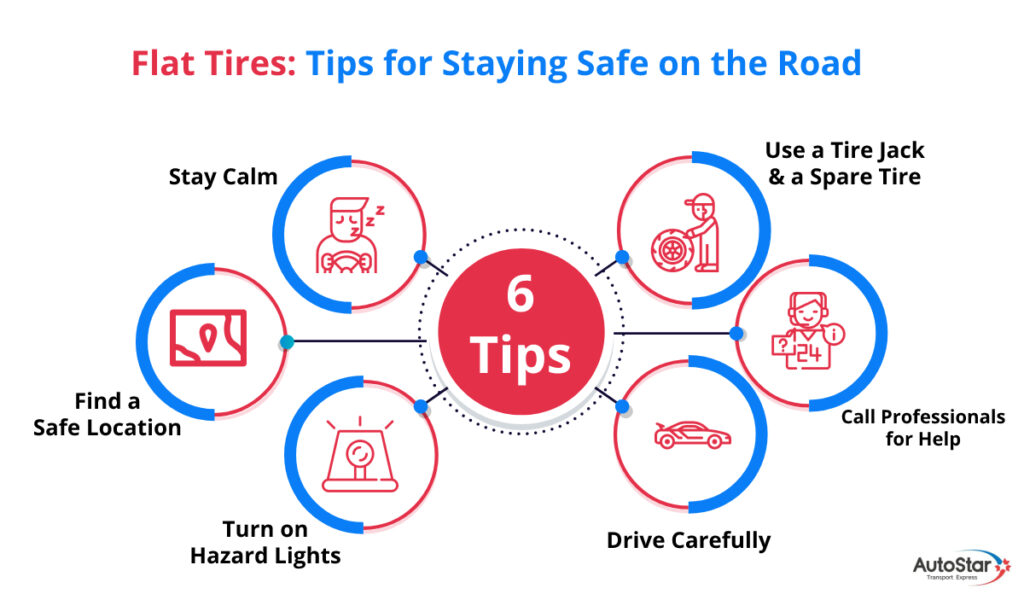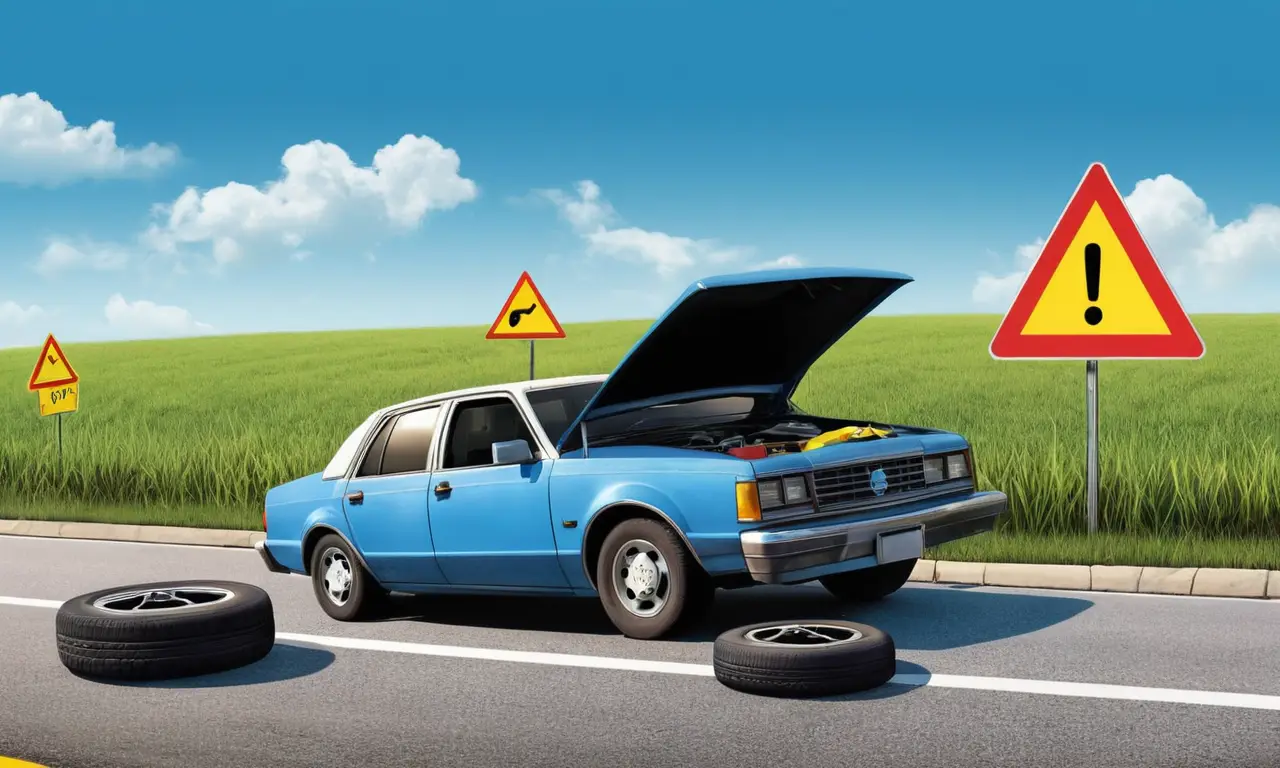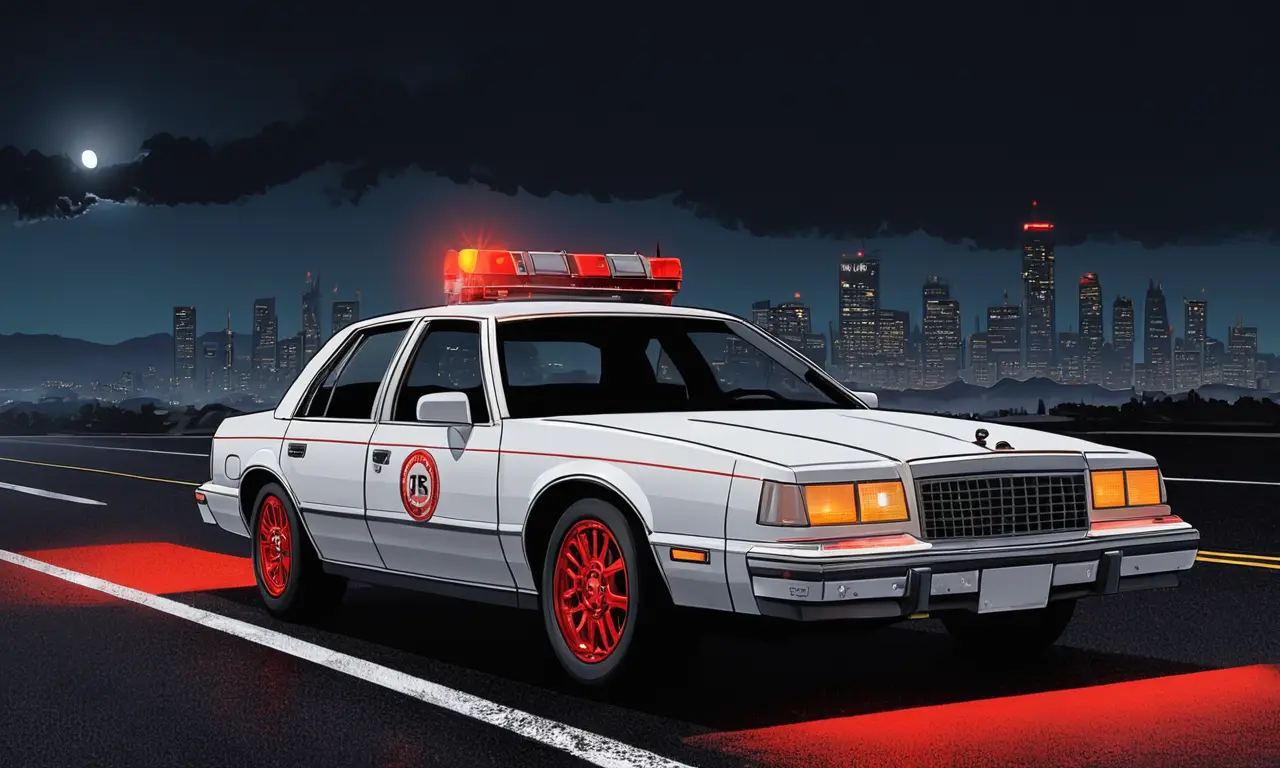
A flat tire on highway can quickly turn a routine drive into a stressful and potentially dangerous situation. Being prepared and knowing the right steps to take can make all the difference in ensuring your safety and minimizing disruption to your journey. This article will guide you through essential safety tips and roadside assistance procedures for handling a flat tire on highway.
This comprehensive guide will cover everything from recognizing signs of a flat tire to safely pulling over, engaging hazard lights, and calling for help. By following these steps, you can navigate this common road hazard with confidence and get back on the road as quickly and safely as possible.
Flat Tire Safety Tips
Before we delve into roadside assistance, it’s crucial to understand how to identify a flat tire on highway and take immediate precautions. Pay close attention to your vehicle’s handling. If you notice unusual vibrations, pulling to one side, or a change in steering feel, pull over immediately to inspect your tires.
Look for visible signs of damage like punctures, bulges, or cuts. Remember, even a slow leak can lead to a complete flat tire on highway, so it’s best to err on the side of caution and address any potential issues promptly. Always carry a spare tire, jack, and lug wrench in your vehicle, ensuring they are properly inflated and accessible.
Highway Roadside Assistance

When faced with a flat tire on highway, roadside assistance is your lifeline. Most car insurance policies include roadside assistance as part of their coverage. Familiarize yourself with the terms and conditions of your policy to understand the extent of coverage and any associated fees.
If you don’t have insurance-provided roadside assistance, consider joining a membership program like AAA or similar services that offer comprehensive roadside help, including tire changes. Keep emergency contact numbers readily available in your vehicle, including your insurance provider, roadside assistance service, and trusted family members or friends.
Safe Location to Pull Over
Your safety is paramount when dealing with a flat tire on highway. The first step is to safely pull over as far off the road as possible. Avoid stopping on blind curves or hills where visibility is limited.
If there’s a designated shoulder, use it. If not, aim for a wide spot on the side of the road, away from traffic flow. Turn on your hazard lights immediately to alert other drivers of your presence and create a safe buffer zone around your vehicle.
Engaging Hazard Lights

Hazard lights are crucial for signaling danger and alerting other motorists to your situation.
Turn them on as soon as you realize you have a flat tire on highway. This will increase your visibility to oncoming traffic and reduce the risk of accidents. Remember, hazard lights should be used only in emergencies and turned off once the situation is resolved.
Calling for Help
Once you’ve safely pulled over and engaged your hazard lights, it’s time to call for help. If you have roadside assistance coverage, contact them directly. Provide your location, vehicle information, and a brief description of the situation.
If you don’t have roadside assistance, consider calling a trusted towing service or local mechanic. Be prepared to provide your exact location and any relevant details about your vehicle.
Conclusion
A flat tire on highway can be a daunting experience, but by following these safety tips and utilizing available resources, you can navigate the situation effectively and minimize risks. Remember to prioritize your safety, pull over in a safe location, engage hazard lights, and call for help promptly. With proper preparation and quick action, you can overcome this common road challenge and get back on track safely.
